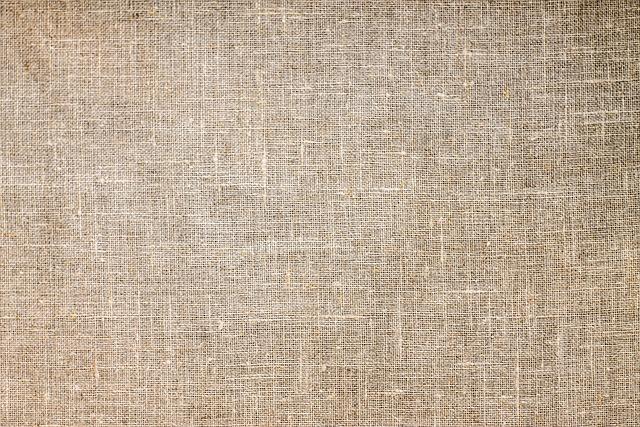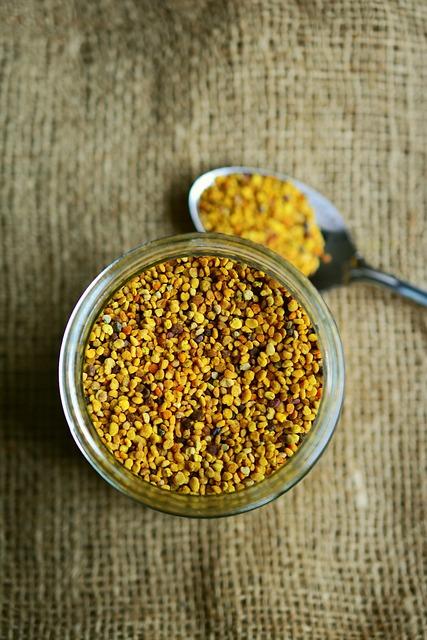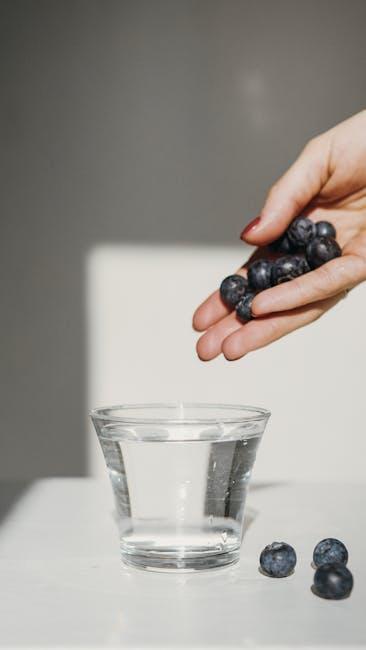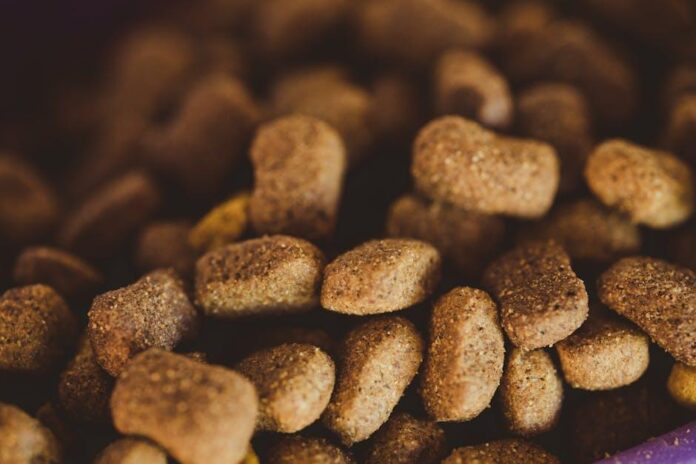In the intricate tapestry of our diets, fiber often finds itself woven into discussions about health, nutrition, and weight management.With the rising awareness of the benefits of dietary fiber, two primary players emerge in this essential category: soluble and insoluble fiber. Each type boasts unique characteristics and advantages, influencing everything from digestion to satiety. As individuals embark on their journeys toward weight control and healthier lifestyles, understanding the distinctions between these two fiber types becomes crucial. In this article, we’ll delve into the nuances of soluble and insoluble fiber, comparing their roles in weight management, exploring their health benefits, and equipping you with the knowledge you need to make informed dietary choices. Whether you’re looking to shed a few pounds or simply enhance your overall well-being, the specific fibers you choose might just hold the key to unlocking your goals.
Exploring Soluble Fiber: The Weight Control Champion
When it comes to weight management, soluble fiber stands out as an essential ally. Found in foods like oats,beans,and fruits,this type of fiber dissolves in water and forms a gel-like substance in the digestive system. This unique property not only slows down digestion but also enhances the feeling of fullness, making it easier to control hunger and reduce overall calorie intake. Soluble fiber also plays a critical role in stabilizing blood sugar levels, preventing the sudden spikes and crashes that can lead to unhealthy snacking.
Incorporating soluble fiber into your diet can be both enjoyable and effective. Here are some delicious sources to consider:
- oats: A hearty breakfast staple, packed with fiber.
- Beans: Versatile and beneficial in various dishes.
- Fruits: Particularly apples, berries, and citrus fruits.
- Chia Seeds: A nutritious topping for smoothies or yogurt.
- Barley: A whole grain high in soluble fiber.
To illustrate the benefits of soluble fiber further, consider the following comparisons:
| Benefit | Soluble Fiber | insoluble Fiber |
|---|---|---|
| weight Control | Increases satiety | bulks stools |
| Blood Sugar Regulation | Helps maintain stable levels | Minimal effect |
| Heart Health | Reduces cholesterol | Supports digestive health |
Ultimately, incorporating soluble fiber into a balanced diet not only supports weight control but also contributes to overall health and wellness, creating a sustainable approach to living well.

Understanding Insoluble Fiber: Bulk and Satiety in Weight Management
Insoluble fiber plays a critical role in weight management by adding bulk to your diet and enhancing feelings of fullness. Unlike soluble fiber, which dissolves in water, insoluble fiber does not change its form, making it a powerful tool for promoting digestive health.By consuming foods rich in this type of fiber, you can enjoy numerous benefits, such as:
- Increased satiety: The bulk created by insoluble fiber can help you feel fuller for longer, reducing the temptation to snack excessively between meals.
- Regular bowel movements: It aids in preventing constipation by adding bulk to the stool, promoting a healthy digestive system.
- Low calorie density: Foods high in insoluble fiber tend to be lower in calories, allowing you to eat larger portions without exceeding your caloric intake.
Incorporating insoluble fiber into your daily diet can be as simple as adding more fruits, vegetables, and whole grains. Some excellent choices include:
| Food Source | Fiber Content (per 100g) |
|---|---|
| Whole Wheat Bread | 6.0g |
| Brown rice | 1.8g |
| Carrots | 2.8g |
| Broccoli | 2.6g |
| Almonds | 12.5g |
By embracing a fiber-rich lifestyle, you not only support your weight management goals but also foster overall health. As you increase your intake of insoluble fiber, keep in mind the importance of hydration, as it works best when paired with sufficient water intake to facilitate the digestive process.

Balancing Both Fibers: A Comprehensive Approach to Effective Weight Control
Achieving effective weight control often requires a balanced intake of both soluble and insoluble fibers. Soluble fiber dissolves in water, forming a gel-like substance that can help slow digestion.This process not only promotes a feeling of fullness but also supports healthy blood sugar levels. Some excellent sources of soluble fiber include:
- Oats
- Beans
- Apples
- Citrus fruits
on the other hand, insoluble fiber does not dissolve in water and adds bulk to the diet, promoting regular bowel movements and preventing constipation.Incorporating a variety of insoluble fiber-rich foods can enhance gut health and support a dynamic digestive system. Popular sources of insoluble fiber include:
- Whole grains
- Nuts and seeds
- Vegetables such as carrots and cauliflower
- Wheat bran

Practical Tips for Incorporating fiber Supplements into Your Diet
Incorporating fiber supplements into your daily routine can be a simple yet effective way to enhance your nutritional intake. Here are some practical tips to help you seamlessly integrate them into your diet:
- Start Slow: Introduce fiber supplements gradually to allow your digestive system to adjust.A sudden increase in fiber can lead to discomfort.
- Mix It Up: Blend soluble fiber supplements, like psyllium husk, into smoothies or oatmeal for added texture and nutrients.
- Stay Hydrated: Pair your fiber supplements with plenty of water to prevent bloating and aid in digestion.
- Check the Labels: Look for supplements that specify their fiber sources; knowing whether they are mostly soluble or insoluble can optimize your weight control efforts.
To ensure you’re getting the moast out of your fiber intake, consider establishing a consistent routine. Here’s a speedy reference table comparing types of fiber and their benefits:
| Type of Fiber | Sources | Benefits |
|---|---|---|
| Soluble Fiber | Oats, beans, apples | Helps lower cholesterol, stabilizes blood sugar |
| Insoluble Fiber | Whole grains, nuts, vegetables | Aids digestion, prevents constipation |
To Wrap It Up
in the quest for effective weight control, the debate between soluble and insoluble fiber supplements invites a closer look at what each can truly offer. As we’ve explored, both types play distinct yet complementary roles in our digestive health, satiety, and overall well-being.Soluble fiber, with its gelatinous nature, beckons us into a fuller feeling while nurturing our gut microbiome. Meanwhile, insoluble fiber stands tall as a steadfast ally in promoting regularity and digestive resilience.
the choice between soluble and insoluble fiber supplements may not be a matter of preference but rather of individuality. Each body reacts differently, and understanding how these fibers interact with your unique system is key to making informed decisions. Armed with knowledge and awareness, you can craft a fiber strategy that aligns with your personal health goals, paving the way for a balanced diet enriched in nutrients and effective in weight management.
So, as you consider your options, remember that the journey to health is as diverse as the fibers we consume.Whether you opt for the soothing embrace of soluble fiber or the robust support of insoluble fiber, the road to well-being is yours to navigate. Choose wisely, listen to your body, and let fiber be your guide on the path to sustainable weight control and vibrant health.






